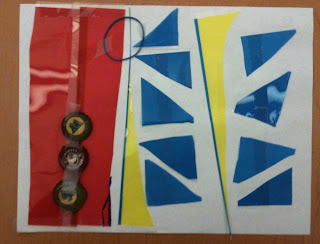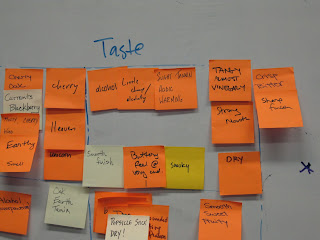This VTS centers on the subject of quickly rendering concepts with sketching techniques.


Date: Thursday, February 3, 2011
Run by: Tim May
Notes by: Graham Barey
Attendees: Public
Libations: Plentiful (although Graham broke two beers preparing the snacks)
Ingredients
: white paper, markers
Agenda:
Icebreaker
Drill #1: Emotion
Drill #2: Objects
Drill #3: Tech
Drill #4: Biz
Palette Cleanser
Define Project
Execute Project
Assess
4:00 pm – Intro/Goals
4:15 pm – Drill #1: Emotions
Attendees were asked to sketch a number of emotions on large sheets of white paper, with approximately 20 seconds devoted to each sketch. Emphasis was placed on speed and initial thought capture rather than refinement of art. Emotions sketched: Love, hate, envy, rage, excitement, shock, depression, fright, empathy, regret, conviction and “bromance”. After the sketching was finished, everyone was asked to circle the room and view the other guests’ sketches.
The second drill had a similar progression to the first. The objects sketched included: A car, a chair, a desk, a tree, a fish, bread, a clock, a factory, a shop, an office building, a road, a helicopter and a dinosaur. After the sketching was finished, everyone was asked to circle the room and view the other guests’ sketches.
4:35 pm – Drill #3: Tech
The third drill had a similar progression to the first two. Tech items sketched: Middleware, cloud computing, network, server, laptop, hub, a “launch” (of software, a product, etc.), IP, software, application, platform, wireless and dashboard. After the sketching was finished, everyone was asked to circle the room and view the other guests’ sketches.
4:45 pm – Drill #4: Biz
The final drill had a similar progression to the first three. The topics sketched were: organization, ROI, synergy, deploy, strategy, optimize, customers and HR.
4:55 pm – Palette Cleanser
After the final drill was completed and evaluated, guests were asked to sketch science fiction topics. These included: robot, alien, universe, laser, space station, planet, solar system, space woman, space food, asteroid, spaceship
5:05 pm – Define Project
Tim attempted to define the project but Graham could not locate his notes. Tim then viciously beat Graham and made him cry. Following that, Tim found the notes himself and proceeded to explain the purpose of the project. Attendees were asked to sketch a process using the visual techniques they had just practiced, that process being the one of buying a house. The group broke into smaller groups of about five members each and proceeded to discuss and sketch the steps of their process.
5:13 pm – Execute Project
The teams brainstormed, sketched and ultimately compiled their concepts into posters that communicated the property buying experience.
5:35 pm – Assess
The teams assembled after their projects were completed and presented to the group.
5:45 pm – Plus/Delta























































